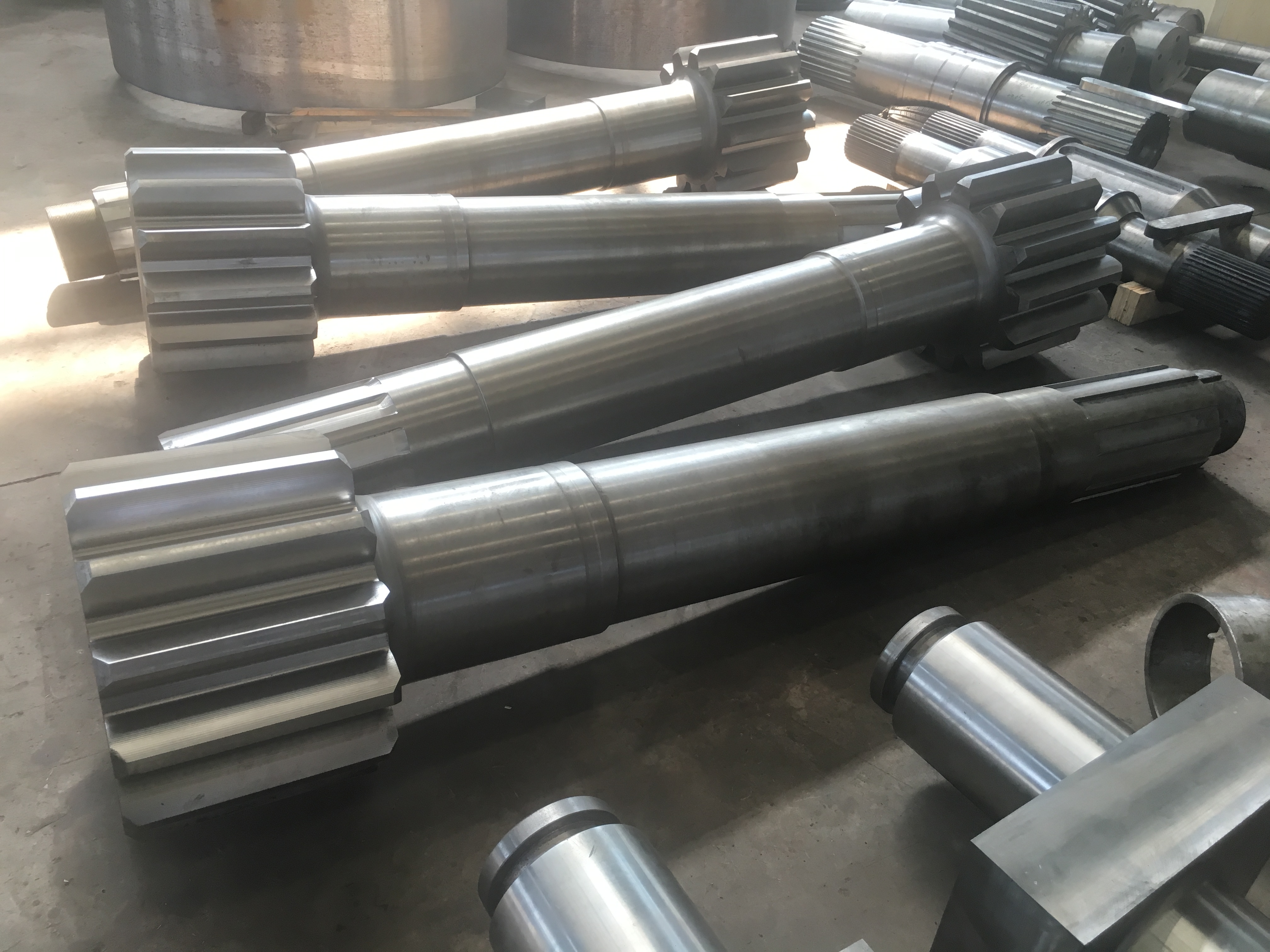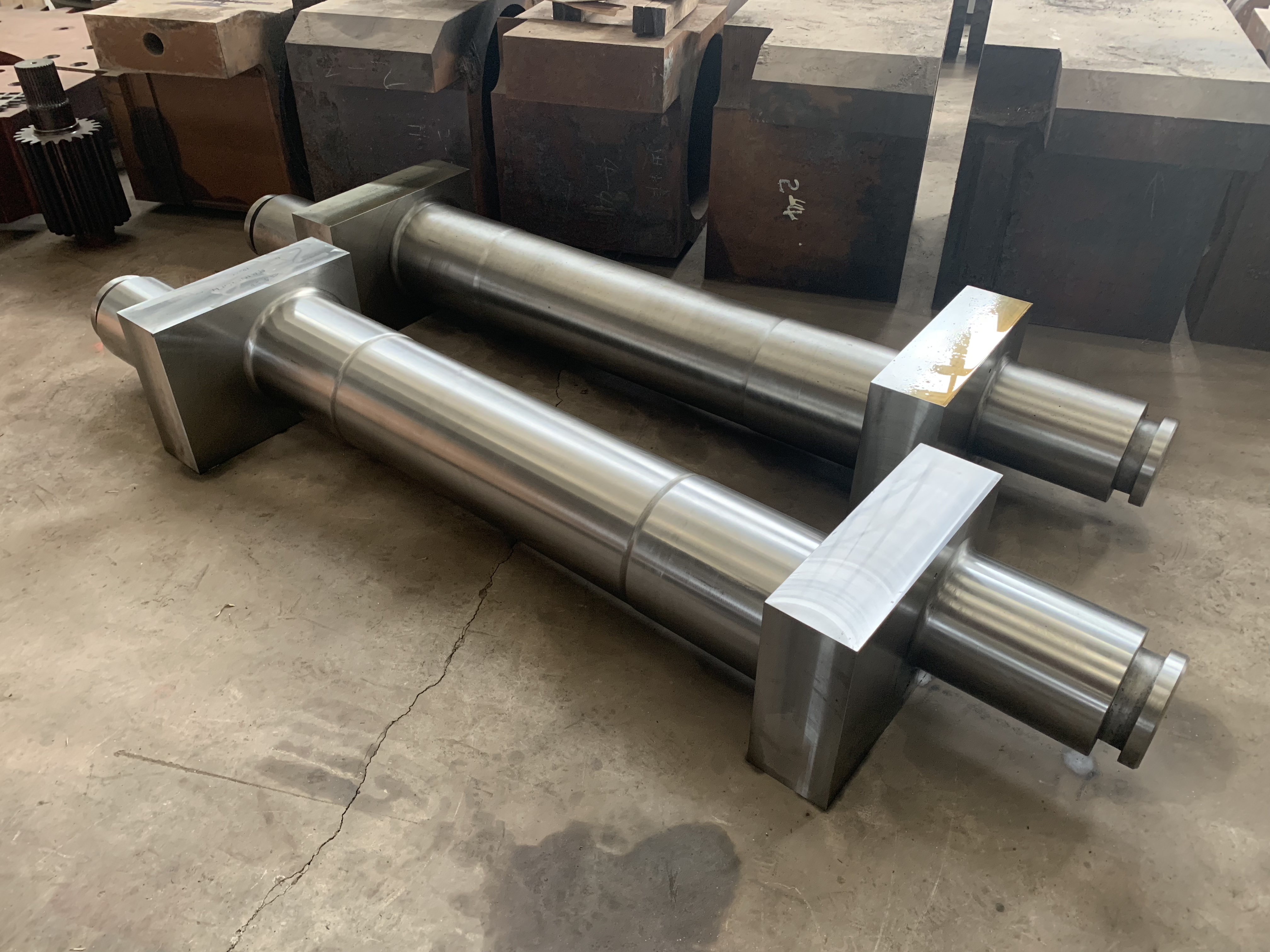Views: 0 Author: YILE Publish Time: 2025-07-09 Origin: https://www.yilemachinery.com/

Large shafts play a crucial role in mining excavators, and their functions are mainly reflected in the following aspects:


Parts Driving Pinion Crankshaft Axle Parts Driving Pinion
Power transmission hub: Large shafts (such as main shafts and drive shafts) efficiently transfer the engine's power to the excavator's actuating components (such as hydraulic pumps, traveling mechanisms, or rotating mechanisms), ensuring high power output of the equipment.
Torque bearing: In heavy-duty operations such as ore digging and crushing, large shafts need to withstand extremely high torsional forces. Their strength and rigidity directly affect the operational capacity and stability of the equipment.
Key Components: As the connecting shafts for components such as the rotating platform, boom, and dipper stick, large shafts bear the dynamic loads of the entire machine structure. Especially in harsh terrains or when operating under excessive loads, they need to withstand bending and impact loads.
Balance and Stability: Through a precisely designed bearing system, the large shaft ensures the smoothness of the excavator's rotation movement, reducing the impact of vibrations on the equipment's lifespan.
High-load durability: Mining excavators often operate continuously. Large shafts need to have excellent fatigue resistance (such as being forged from alloy steel and undergoing surface hardening treatment) to prevent shutdown due to shaft breakage.
Precise motion control: Under the drive of hydraulic motors or electric motors, the rotational accuracy of the large shaft directly affects the accuracy of actions such as bucket positioning and material dumping.
Resistance to wear and corrosion: The mining environment is often dusty, humid or contains corrosive substances. Large shafts need to extend their service life through coating, sealing design or the use of special materials (such as stainless steel).
Temperature adaptability: In high-temperature or extremely cold working conditions, the shaft material must maintain stable performance to prevent failure of the fit caused by thermal expansion and contraction.
Modular Design: Some large shafts adopt replaceable designs (such as segmented transmission shafts), facilitating local maintenance and reducing maintenance costs.
Life cycle management: The reliability of the shaft is directly related to the overall operation and maintenance cost of the equipment. High-quality shaft components can reduce unplanned downtime losses.
Therefore, the large shafts are the "bones" and "blood vessels" of the mining excavators. Their performance directly determines the operational efficiency, reliability and lifespan of the equipment. As heavy equipment continues to evolve towards larger tonnage and intelligence, higher requirements are placed on the material and processing techniques of the shafts (such as nano-coating and composite materials) as well as on the design optimization (such as the combination of lightweight and high strength).
